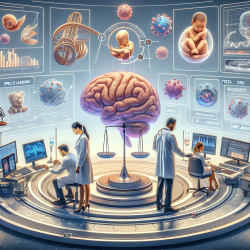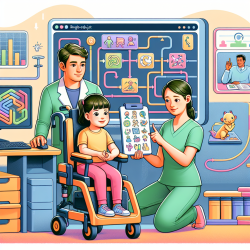In the ever-evolving landscape of education and therapy services, data plays a pivotal role in driving informed decisions and improving outcomes. As a Special Education Director, you are likely familiar with the challenges of integrating diverse datasets to enhance educational practices. The recent research article "A General Primer for Data Harmonization" provides valuable insights into how data harmonization can be leveraged to improve practitioner skills and service delivery in educational settings.
Understanding Data Harmonization
Data harmonization is the process of reconciling various types, levels, and sources of data into formats that are compatible and comparable. This practice is essential for maximizing the utility of data across different domains. In educational settings, data harmonization can help integrate information from multiple sources such as student performance records, therapist notes, and administrative data to create a comprehensive view of student needs.
The Benefits of Data Harmonization in Education
Implementing data harmonization in educational settings offers several benefits:
- Improved Decision-Making: By integrating diverse datasets, educators and therapists can make more informed decisions that are based on a holistic understanding of student needs.
- Enhanced Collaboration: Harmonized data facilitates better collaboration among educators, therapists, and administrators by providing a unified view of student progress and challenges.
- Resource Optimization: With a clearer understanding of student needs and resource allocation, schools can optimize their use of resources to better support students.
Challenges and Considerations
While the benefits are significant, practitioners must also consider the challenges associated with data harmonization:
- Data Privacy: Ensuring compliance with legal standards for data privacy is crucial when integrating sensitive student information.
- Technical Expertise: Implementing data harmonization requires technical expertise to manage different data formats and structures effectively.
- Cultural Sensitivity: Recognizing and respecting cultural differences in data interpretation is essential to avoid misrepresentation or bias.
Steps to Implement Data Harmonization
The research provides a framework for implementing data harmonization effectively:
- Define Objectives: Clearly define the goals of your data harmonization efforts to ensure alignment with educational priorities.
- Select Core Variables: Identify key variables that need to be harmonized across datasets to achieve your objectives.
- Develop a Harmonization Plan: Create a detailed plan outlining the steps required for harmonizing data, including technical requirements and stakeholder involvement.
- Implement and Validate: Execute the harmonization plan and validate the results to ensure accuracy and reliability.
The insights from "A General Primer for Data Harmonization" underscore the importance of thoughtful implementation. By leveraging these strategies, practitioners can enhance their skills and improve service delivery in educational settings.
If you are interested in exploring this topic further, I encourage you to read the original research paper. To access it, please follow this link: A General Primer for Data Harmonization.










